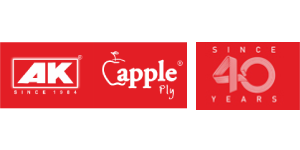In modern architecture, louvers are essential because they perfectly merge form and function, improving the building’s visual and environmental aspects. Their primary function is to manage natural light, regulate airflow, and provide privacy within a structure.
Louvers are emerging as an effective tool for architects with flexible solutions for climate control, energy efficiency, and unique aesthetics. They contribute to the overall architectural style by generating dynamic facades and providing a depth of refinement.
This blog will explore the significant features and innovative ideas of incorporating louvers in modern architecture.
Significant Features of Louvers
Modern architectural louvers include various features that contribute to their popularity and adaptability.
1. Adaptive Design
Modern louvers frequently have changeable slats, allowing architects and occupants to control sunlight, airflow, and privacy dynamically. Due to this versatility, they add a dynamic and personalized effect to the surroundings.
2. Material Innovation
As technology advances, louvers are available in various materials such as wood, WPC louvers, and PVC louvers. This provides architects with different options for matching architectural aesthetics while addressing sustainability and durability.
3. Energy Efficiency
Louvers are critical in improving a building’s energy efficiency. Architects can optimize natural light, decrease the need for artificial lighting, and modulate airflow to promote ventilation by strategically installing louvers.
4. Aesthetic Appeal
Modern louvers contribute significantly to a structure’s visual appeal. Architects use louvers to create dynamic and complex facades for practical purposes and as architectural features.
5. Privacy and Security
Louvers are an effective way to provide privacy without sacrificing natural light. They protect from outside damage while still allowing for views and ventilation. They can also improve a building’s security by limiting external visibility.
6. Sustainable Materials
Louvers of sustainable materials align with the increased emphasis on environmentally responsible building techniques. Wood, WPC, and other eco-friendly materials help achieve sustainability goals and lend a natural warmth to architectural design.
7. Customisation
Modern louvers allow designers to become quite creative. Architects can modify louvers to meet the exact design requirements and preferences of a project, from the angle of the slats to the materials and colours used.
8. Integration of Smart Technologies
Some modern louvers incorporate smart technologies, allowing for remote control or automation. This technological integration improves user convenience and is consistent with the broader trend of innovative buildings.
11 Innovative Ideas for Incorporating Louvers Into Modern Architecture
Here are some creative ideas you can consider while incorporating louvers into modern architecture.
1. Kinetic Louver Facades
You can design louvers with flexible movement in response to shifting user choices or meteorological circumstances. On the exterior of buildings, kinetic louvers have functional advantages and provide captivating visual effects.
2. Sculptural Louvers Installations
Designers can convert louvers into magnificent sculptures by adding creative forms and shapes. These designs enhance the building’s visual appeal and its functional uses.
3. Biomimicry Louvers
You can use biomimicry techniques to incorporate natural inspiration into louver designs. Utilise organic designs, like those found in animal fur or leaf veins, to enhance light diffusion and ventilation while producing a visually striking facade.
4. Colorful Louver Patterns
To give the outside buildings a fun and dynamic touch, you can experiment using bright colours and patterns on the louvers. In addition to improving the aesthetic appeal, this fosters creativity.
5. Configurations of Geometric Louvers
Louver allows architects to play around with different geometric forms. This makes complex configurations or patterns that interact with light and shadow to transform the building exterior into a geometric painting.
6. Floating Louver Canopies
To incorporate louvers, you can construct floating louvers that give the impression of defying gravity and floating weightlessly. Applying this pattern to entrances or outdoor places provides a visual element of surprise and curiosity.
7. Folded Louver Screens
Designers can try folding or making louvers that resemble origami to make elaborate screen designs. These screens serve as practical features for privacy or shading in addition to their aesthetic value.
8. Perforated Louver Murals
For the façade of buildings, architects can use perforated louvers to create murals or other images. When seen from a distance, these louvers create a broader vision, transforming the structure into a blank canvas for creative creativity.
9. Skylights Louvers
Another idea is to equip skylights with louvers to regulate and filter natural light. Customizing dynamic louver combinations to maximize daylighting and produce eye-catching patterns in interior areas is possible.
10. Foldable Wooden Louvers Panel
Architects can create wooden louvers with foldable or unfoldable designs to enable a variety of configurations according to user preferences or weather conditions. The building’s design gains flexibility from the use of foldable panels.
11. Transparent Louver Screens
Lastly, consider using translucent or transparent materials for your louvers. This design makes diffused vistas and gentle lighting effects possible, harmonizing transparency with privacy.
Louvers in Modern Architecture: Shaping the Future with Functionality and Creativity
The widespread use of louvers in modern architecture expands conventional functions of controlling airflow, light, and privacy. In modern times, louvers combine aesthetic expression with practicality to create dynamic architectural components.
The wide range of innovative ideas, from biomimicry-inspired arrangements to kinetic facades, demonstrate the creative possibilities in modern architecture. Louvers are a flexible addition to a building’s appearance and utility as architects push the envelope and embrace sustainability, adaptability, and interactive components.
Add a unique touch to your building with creative louvers. Contact AK Apple Ply to explore innovative designs and turn your idea into a masterpiece.
Read More: Top 10 BWP Plywood Companies in India




